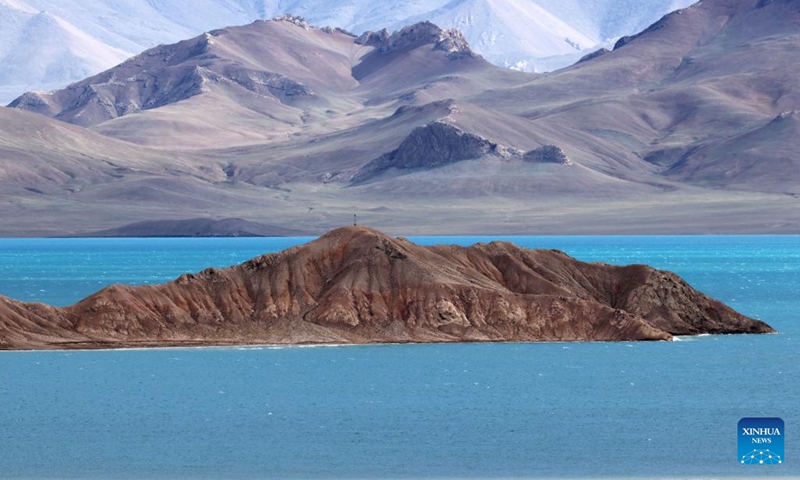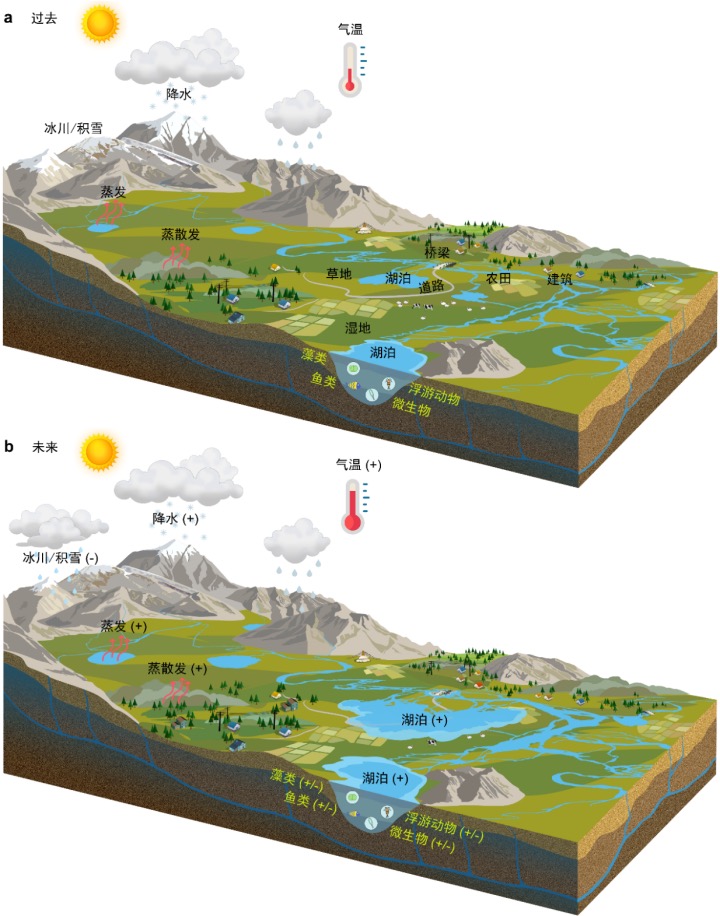
This photo taken on July 10, 2023 shows a lake in the Altun Mountains National Nature Reserve in northwest China's Xinjiang Uygur Autonomous Region. With an average altitude of 4,580 meters, the Altun Mountains National Nature Reserve covers a total area of 45,000 square kilometers and is a representative of plateau desert ecosystem in China.(Photo: Xinhua)
Lakes on the Qinghai-Xizang (Tibet) Plateau, also known as Tibetan Plateau, are projected to expand in area by around 50 percent during the 21st century under a low emissions scenario, putting critical human infrastructure and ecosystems at risk of being submerged, according to a latest study of scientists from the Institute of Tibetan Plateau Research (ITP), Chinese Academy of Sciences (CAS).
The study, conducted by a research team led by Zhang Guoqing from the ITP, had been published published in Nature Geoscience.
The Tibetan Plateau is home to a vast number of lakes that play an important role in the hydrological and biogeochemical cycles within the region. In recent decades, these lakes have been expanding in response to changing climate conditions. Understanding how these lake trends will evolve in future and quantifying the risk to infrastructure and ecosystems is crucial for informing appropriate hazard mitigation strategies, Zhang told the Global Times.
Some models have been used for studying future changes in lakes on the Tibetan Plateau. But these models have limitations in predicting the future of individual lakes due to spatiotemporal heterogeneity. In addition, some previous studies have focused on specific large lakes or single cases, failing to cover the comprehensive future changes in all lakes on the plateau and their widespread impacts, according to Zhang.
Zhang and research fellows team developed a data-driven modelling framework to project future changes in Tibetan Plateau lakes, and the resulting impacts, under different emissions scenarios.

Photo: Courtesy of the Institute of Tibetan Plateau Research
Their results suggest that the lakes in the Tibetan Plateau lakes had expanded by more than 10,000 square kilometers in the past three decades. By 2100, the total area of lakes in the Tibetan Plateau may increase by around 50 percent compared to 2020 under a low emissions scenario (SSP1-2.6), according to Xu Fenglin, a doctoral student from the ITP and first-author of the study told the Global Times.
This increase could result in lakes on the plateau occupying an additional 20,000 square kilometers of surface area with an increase in water level of 10 meters. The team estimates that total water storage will quadruple by about 652 billion tons with increased precipitation and glacial meltwater profoundly reshaping Tibetan Plateau hydrology.
In the absence of hazard mitigation, the lake expansion is projected to submerge over 1,000 kilometers of roads, around 500 settlements, and 10,000 square kilometers of varied ecosystems. The lake expansion and resulting impacts are projected to be even larger for higher emissions scenarios.
The expansion of lakes will increase lake-atmosphere exchange, which may lead to an increase in greenhouse gas concentrations in the atmosphere, further exacerbating global warming, according to the study.
In the future, the increase in lake water volume will cause a decrease in lake water salinity, further altering the species abundance and nutrient structure of lake ecosystems. In addition, the formation of new river channels due to the reorganization of lake basins will also disrupt the migration of plateau animals, highlighting the urgent need to implement more effective sustainable management measures to mitigate the impact on social development and ecosystems, the scientists noted.
The scientists called for adequate mitigation and adaptation strategies to protect against hydrological changes and their impact on infrastructure in the region.





